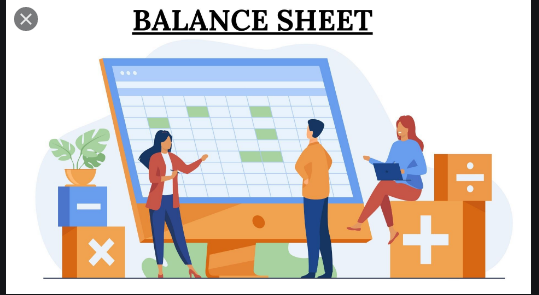Balance Sheet Definition: A balance sheet is a financial statement that displays the state of a company’s assets, liabilities and shareholders’ equity and specific time. It offers a basis for computing rates of return and evaluating its capital structure, and acts as a picture of what a company is indebted with and what it owns, and the amount invested by shareholders.
A balance sheet is divided into two sections the right side and the left side. While the right side of the balance sheet outlines all of a company’s assets, the left side of the balance sheet outlines the company’s liabilities and shareholders’ equity. On both sides, the mainline items are generally classified by liquidity. More liquid accounts like Inventory, Cash and Trades Payables, are placed before liquid accounts like plant, property, and equipment (PP&E) and Long-Term Debt. The assets and liabilities are also divided into two categories, they are current asset/liabilities and non-current (long-term) assets/liabilities.
Importance of Balance Sheet
Liquidity
This is comparing a company’s current assets to its current liabilities. The current assets should be greater than current liabilities to enable the company to cover it’s short term obligations.
Leverage
How much leverage a company has, is determined by how financed the company is, and this, in turn, indicates how much financial risk the company is taking. To assess leverage on a balance sheet, compare debt to equity and debt to total capital.
Efficiency
Using an income statement in conjunction with a balance sheet enables you to assess how efficiently a company uses its assets
Rates of Return
The balance sheet can be used in evaluating how well a company generates returns.
Limitations of the Balance Sheet
The balance sheet only captures financial statements in time, thus it can only use the difference between this point in time and another single point in time in the past.
Since it is static, many financial ratios draw on data included in both the balance sheet and the more dynamic income statement and statement of cash flows to portray a fuller picture of the current picture of a company’s business.
Different accounting systems, as well as ways of dealing with depreciation and inventories, also alter the figures posted to a balance sheet. Thus managers have some ability to make the numbers look more favorable
What’s on the Balance Sheet?
Assets
Assets are organized into liquid assets (i.e.) those that are cash or can be easily converted into cash, and non-liquid assets that cannot quickly be converted to cash like land, buildings, and equipment.
Assets can also include intangible assets, which are more difficult to value. According to Generally accepted accounting principles (GAAP), the intangible assets to be listed on a balance sheet if they are acquired assets with a life span and an identifiable fair market value that can be amortized which can be reported on a balance sheet at the original cost minus depreciation are items like Franchise agreements, Copyrights, and Patents.
Liabilities
These are funds owed by the business and are divided into current and long term categories. Current liabilities are those due within one year and they include items such as
- Accounts payable
- Interest
- Maturing debt
- Wages
- Income tax deductions
- Pension plan contributions
- Medical plan payments
- Building and equipment rents
- Customer deposits
- Utilities
- Sales tax and/or goods and services tax charged on purchases.
Long term liabilities are any that are due after one year, like deferred tax liabilities, any long term debt like interest and principal on bonds and any pension fund liabilities.
Equity & Earnings
Equity, also known as shareholder’s equity, is what is left after subtracting the liabilities from the assets. Retained earnings are earnings retained by the corporation, which is not paid to shareholders in the form of dividends.
Note that, retained earnings are used to pay down debt or are otherwise reinvested in the business to leverage on the growth opportunities. If a business is in a growth phase, retained earnings are typically used to fund expansion rather than paid out as dividends to shareholders. They include:
- Temporary loans, lines of credit or overdrafts.


